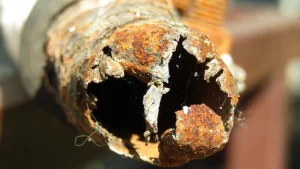
As the temperatures drop and the chill of winter sets in, one of the most important aspects of staying warm is making sure your heating oil tank is filled and ready to go. But how often should you refill your heating oil tank? The answer isn’t one-size-fits-all; it depends on several factors. In this blog, we’ll explore how to determine the best refill schedule for your domestic heating oil shropshire, signs you may need to top up sooner, and tips for ensuring you don’t run out of oil unexpectedly.
Factors That Affect How Often You Need to Refill
- Tank Size Your tank’s capacity plays a big role in how often you need to refill. Residential heating oil tanks typically hold between 275 and 330 gallons, with larger homes needing more oil. The more oil your tank holds, the longer it will last before needing a refill.
- Home Size and Insulation Larger homes or homes that are poorly insulated will use more oil to stay warm. If your home has multiple levels, large rooms, or thin walls, your heating system will need to work harder, which can deplete your tank faster. On the other hand, homes with better insulation may use less oil because they can maintain heat more efficiently.
- Climate If you live in a colder climate, you’ll use more heating oil during the winter months. Similarly, if your region experiences long winters or extreme temperatures, you’ll need to refill more frequently than someone living in a milder area. Your geographic location plays a huge role in consumption.
- Heating System Efficiency Newer, more energy-efficient heating systems burn oil more slowly and evenly, reducing the need for frequent refills. Older models or systems that are not well-maintained tend to burn oil faster and waste energy, requiring more frequent refills. Regular maintenance of your heating system can help optimize oil consumption.
- Usage Patterns How often your home needs heating also matters. If you keep your home at a comfortable temperature all day and night, your system will burn more oil. If you tend to keep the temperature lower during the day when you’re away and turn it up at night, your system might use oil more sparingly.
How to Estimate Your Heating Oil Usage
On average, a household uses about 1 gallon of heating oil per hour during the colder months. This means that if your home’s heating system is running for 10 hours a day, you can expect to burn around 10 gallons of oil per day.
Using that estimate, you can calculate how long a full tank will last. For example:
- If you have a 275-gallon tank, and your system uses 10 gallons per day, the tank will last about 27 days.
- If your tank is 330 gallons, it will last about 33 days at the same rate.
Keep in mind that this is just an average, and your actual usage may vary depending on all of the factors we’ve discussed above.
How to Monitor Your Tank’s Oil Level
Many modern homes have heating oil tanks equipped with gauges that show the oil level, but you can also use a stick to measure the oil inside your tank. Checking the oil level regularly is crucial in preventing an empty tank.
Here are some guidelines:
- Check Monthly: For a typical winter season, checking the oil level once a month is often sufficient. This helps you avoid running out unexpectedly, especially during colder months when oil consumption increases.
- Watch for Low Levels: If the gauge shows the oil level is ¼ full or lower, it’s time to start thinking about a refill. Running a tank completely empty can damage your heating system, so it’s better to refill early.
Tips to Avoid Running Out of Heating Oil
- Keep Track of Your Usage By monitoring your usage patterns, you can predict when you’ll need a refill. If your consumption is higher than expected (e.g., during a particularly cold spell), you may need to order oil sooner.
- Sign Up for Automatic Delivery Many heating oil suppliers offer automatic delivery services. This means they’ll track your oil usage and deliver oil when your tank gets low, saving you from having to check it yourself or worry about running out.
- Consider a Heating Oil Alarm Installing an alarm or notification system for your heating oil tank can provide peace of mind. These systems alert you when your oil reaches a low level, ensuring you never miss the refill window.
- Order Oil Early Don’t wait until your tank is nearly empty. Ordering early can save you from price spikes that sometimes occur during the colder months. It’s always a good idea to plan ahead.
- Insulate Your Tank Keeping your tank insulated, especially if it’s outside, will help minimize the chances of running out of oil unexpectedly. Insulation keeps the oil from becoming too cold and sludgy, and it prevents tank damage in extremely cold temperatures.
How Often Should You Refill?
The frequency of your heating oil refill depends on your individual situation, but as a general rule:
- Homes with standard-sized tanks typically need to refill every 1 to 3 months during the winter.
- Homes with larger tanks or lower oil usage may only need a refill every 4 to 6 months.
- Homes in colder climates or with high energy demands will need to refill more frequently, sometimes every 2 to 4 weeks during peak winter months.
Ultimately, staying on top of your oil usage and knowing the signs that it’s time for a refill will help ensure that your home remains warm throughout the winter without surprises.
Conclusion
How often you should refill your heating oil tank depends on a variety of factors, including your home’s size, climate, insulation, and the efficiency of your heating system. While there’s no single answer, a little preparation and monitoring can go a long way in preventing costly interruptions in your home’s heat supply. Keep an eye on your oil levels, track your usage patterns, and make sure to schedule refills before you’re running on empty. Stay warm this winter by being proactive about your heating oil needs!







